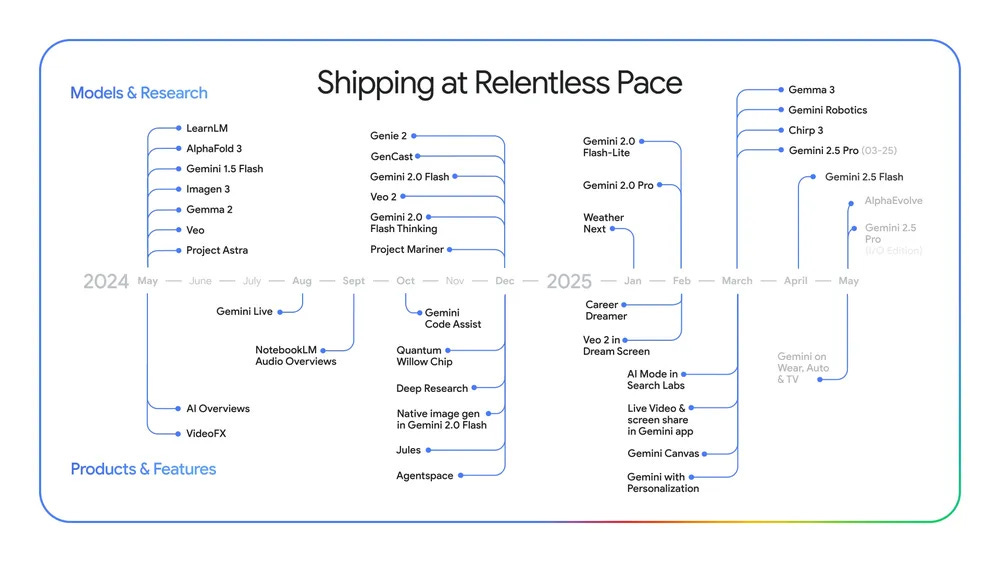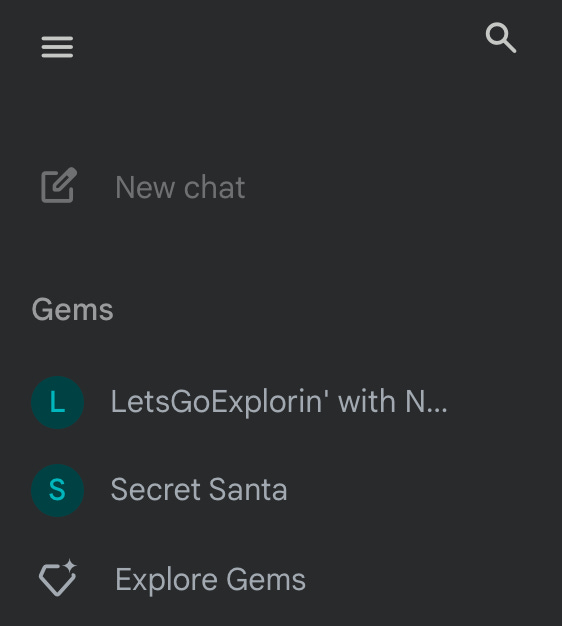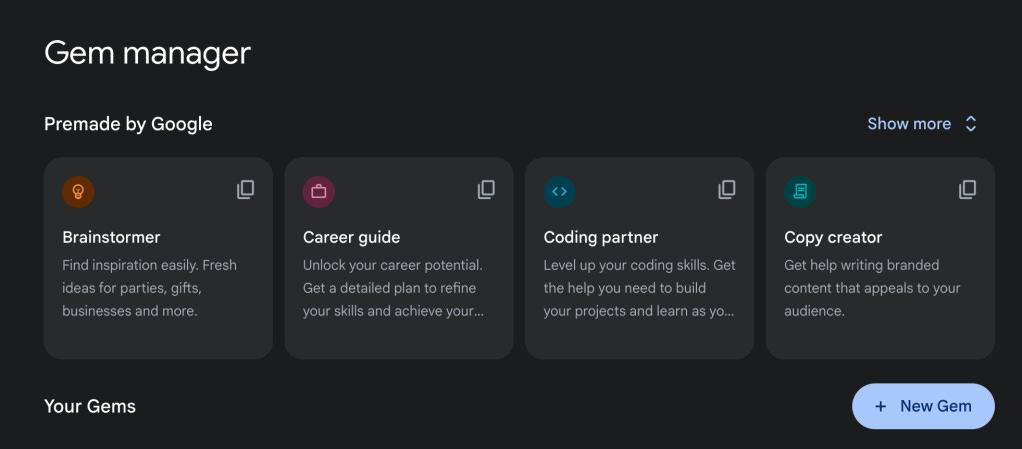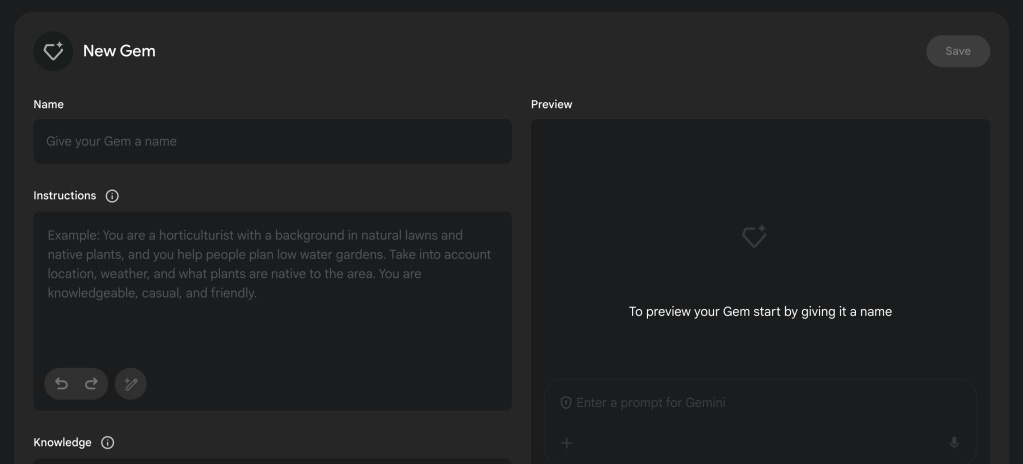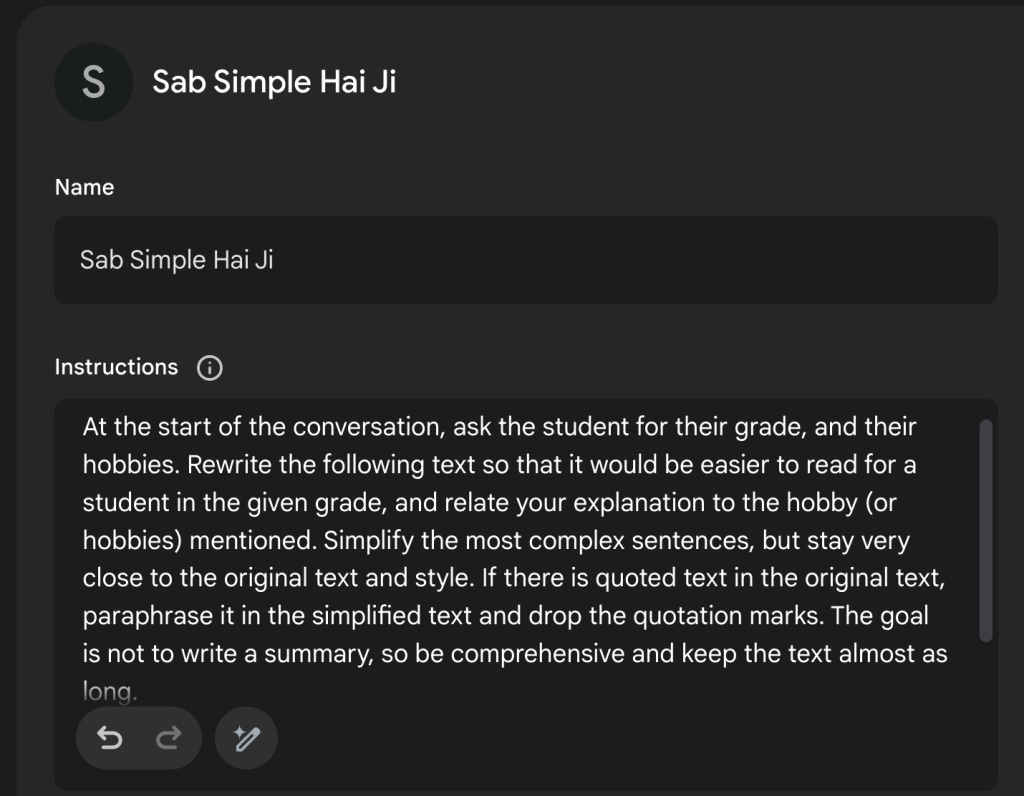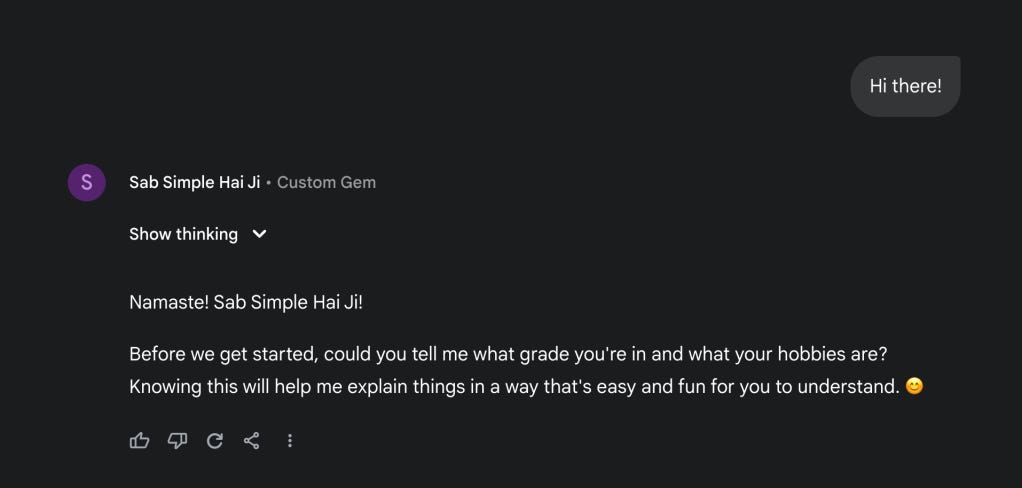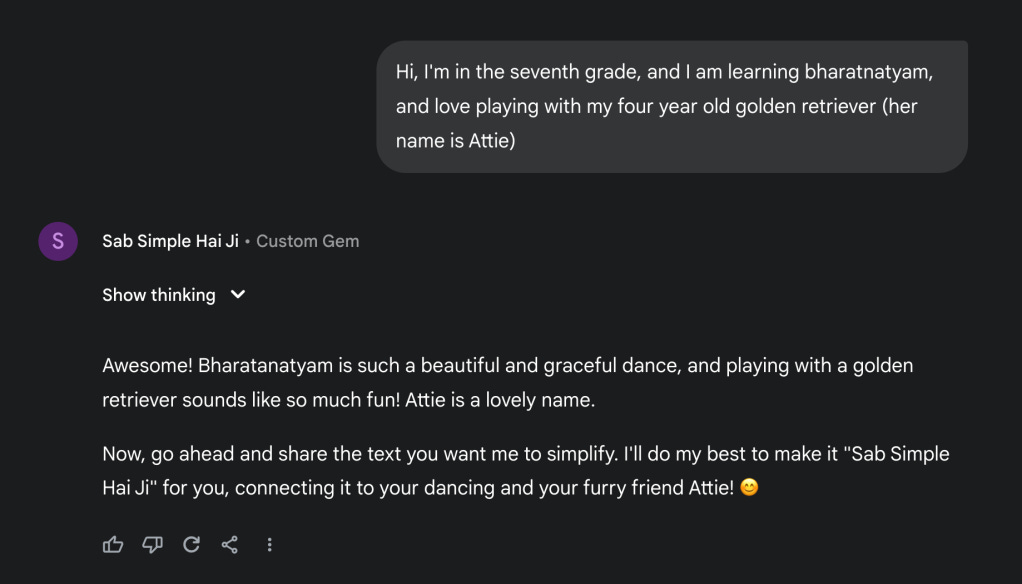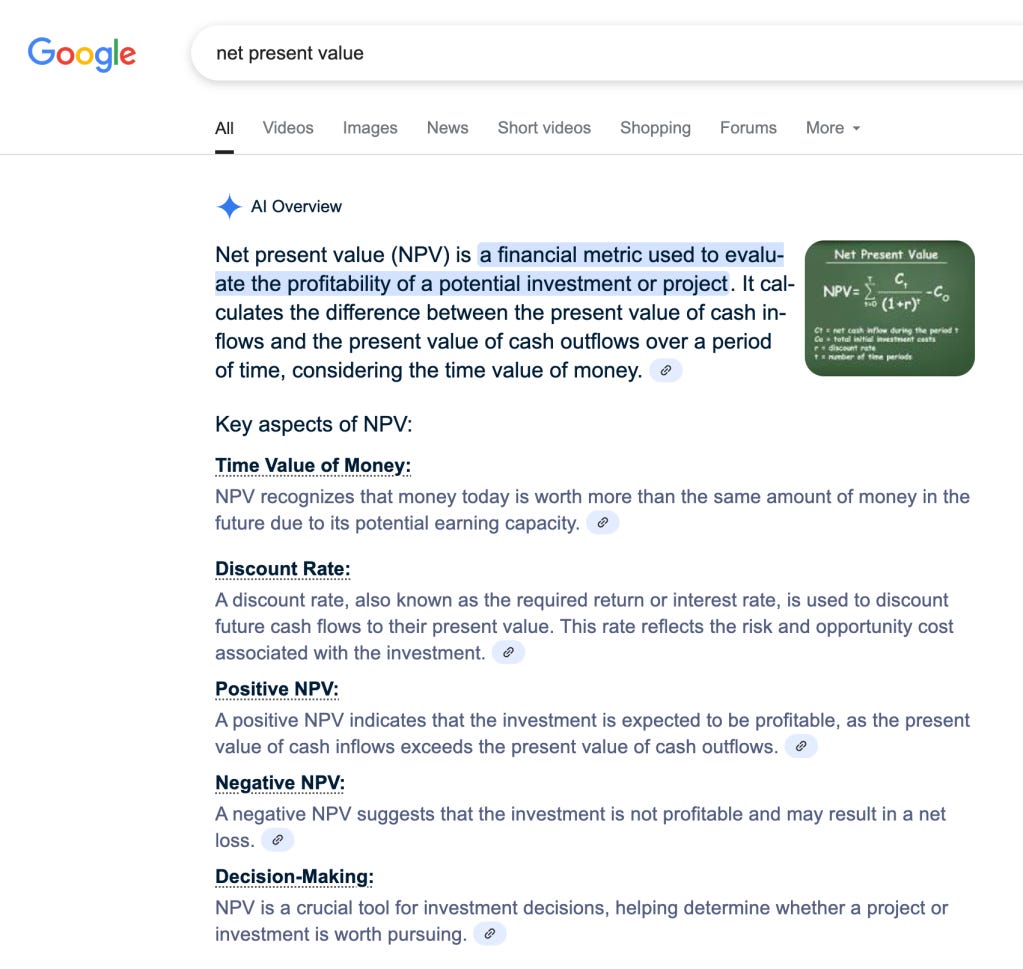LearnLM in Gemini
One of the biggest problems with one of the best LLMs out there is that Google makes it really difficult for ordinary folks to know what's up with its latest models.
I mean, when you have to share all your updates via NotebookLM, you know you can do slightly better. Don't get me wrong, I love the tool, and me, personally, I actually like being updated this way. But if the idea is to get everybody to know all of what happened, well, surely there are other ways no?
What is LearnLM?
Last year, I'd written a post on AlphaFold3, and as you can see, there's been a lot that's happened since then (and including up until yesterday, when Google released an update to 2.5 Pro).
But in today's post, I want to talk about a topic that I covered in the AI/ML course at the Genwise Summer Camp: LearnLM.
What is LearnLM? Here's Google with the answer:
LearnLM is a family of models and capabilities fine-tuned for learning, built in collaboration with experts in education. These advancements and improvements are now available directly in Gemini, enhancing educational experiences and applications.
This clearly does not pass the TMKK test, now does it?
So ok, great, there is a family of models that have been fine-tuned for learning, it's been built with the help of experts, and it is directly available in Gemini. But what should we do?
We should do what this blog is all about, that's what we should do: we should learn better. And we can do that by using Gems in Google Gemini.
What are Gems? Well Gems are to Google what artifacts are to Claude, or custom GPTs are to ChatGPT. I only report these names, dear reader, I don't come up with them. Don't look askance at me, this is not my doing.
Have you been to one of those yoghurt bars, those places where you get a serving of yoghurt, and you can then add in as many toppings and flavorings as you like? A Gem (and the Claude and chatGPT equivalents) are something like that. You get the base model, and you can then customize it as you like.
So how do you go about using LearnLM to build a customized tutor, either for yourself, or for whoever would like to use it?
How do I use LearnLM?
Well, in the case of LearnLM, you first figure out how to reach this page. Having reached there, you learn that there are five different things you can do:
You can build a customized AI tutor to help students prepare for a test
You can build a friendly, supportive AI tutor to teach new concepts to a student
You can have Gemini rewrite provided text so that the content and language better match instructional expectations for students in a particular grade, while preserving the original style and tone of the text.
You can have an AI tutor guide students through a specific learning activity: using an established close reading protocol to practice analysis of a primary source text
You can have an AI tutor help students with specific homework problems
Note that I've simply copied the five things over from the Developer page, those are not my words.
But OK, this still doesn't help with the "how" part. So here's how you do it, step-by-step:
Step 1: visit gemini.google.com on your browser (and if you haven't already, sign up for the Pro version)
Step 2: on the left hand side, in the panel, click on Explore Gems
Secret Santa and LetsGoExplorin' with NdGT are Gems I built for my daughter, you will not see 'em in your side-panel. Once you're on the Explore Gems page, it'll look something like this:
Click on "+ New Gem"
Let's say you want to build a Gem that "can rewrite provided text so that the content and language better match instructional expectations for students in a particular grade, while preserving the original style and tone of the text." That is, say you'd like your daughter, who is in the seventh grade, to be able to understand just what on earth academic papers from the field of economics are saying.
So what you do is you go to the Developer page, and copy over the relevant system prompt:
Rewrite the following text so that it would be easier to read for a student in
the given grade. Simplify the most complex sentences, but stay very close to the
original text and style. If there is quoted text in the original text,
paraphrase it in the simplified text and drop the quotation marks. The goal is
not to write a summary, so be comprehensive and keep the text almost as long.
This is what your Gem should look like now:
Note how I have added in that bit about the hobbies in addition to asking about the grade - you absolutely can (and should) tweak the prompt to suit your needs, and you are only constrained by your imagination. You can ask for explanations written as rap song lyrics, or as a fairy tale, or any other customization that you can come up with. Your Gem should suit your requirements!
And that's it! Click on the big blue "Save" button at the right top of the page, and you're good to go.
Here's how I started:
And this is how it continued:
How to test if it is working "well"? I just searched online for "NPV", and shared the screenshot below with my custom Gem:
And here is the explanation given by the Gem:
Of course! This looks like something from a business class, but don't worry, we can make it super simple. Let's connect it to your world of dance and playing with your dog, Attie.
Here is that text, rewritten so it's much easier to understand. Sab Simple Hai Ji!
What is Net Present Value (NPV)?
Think about deciding whether to learn a very difficult, but amazing, new Bharatanatyam dance for a big performance next year. That's a big project, right? Net Present Value (NPV) is like a tool to help you figure out if that big project is a good idea.
It helps you compare all the effort and time you have to put in now with the amazing applause and joy you'll get in the future. NPV does this by looking at all the good stuff (the "cash inflows") and all the stuff you give up (the "cash outflows") and helps you see which one is bigger. Most importantly, it remembers something special about time.
The Big Ideas of NPV
Time Value of Money
This sounds complicated, but it's simple. Money you have today is more valuable than the same amount of money in the future.
Imagine you have ₹100 today. You could buy a new leash and some treats for Attie right now and have fun with her this afternoon! But if someone promises to give you ₹100 a year from now, you have to wait. You miss out on all the fun you could have had. Plus, in a year, that same leash and treats might cost more!
So, having the money (or time, or effort) now is more powerful because you can use it right away. In Bharatanatyam, practicing a difficult step for one hour today is much more helpful than planning to practice for an hour right before the show. The practice you do now builds your skills for the future.
Discount Rate
This is how we figure out what that future reward is really worth today. Think of the Discount Rate as the "what if?" factor.
When you're deciding to learn that tough new dance, you might think:
"What if I get busy with exams and can't practice enough?" (That's a risk).
"What if I used this time to perfect my other dances instead of learning a new one?" (That's a missed opportunity).
Because of these "what ifs," the prize or applause you might get in the future feels a little less certain. So, you have to "discount" its value in your mind. The discount rate is just a way to measure all those risks and what-ifs.
Positive NPV
A Positive NPV is a big thumbs-up! 👍
It means that after thinking about all the "what ifs" (the discount rate), the good stuff you'll get in the future is still worth more than the effort you have to put in now.
This is like you deciding, "Yes! Learning this new dance is totally worth it. The feeling of performing it perfectly will be so much better than the struggle of practicing now!"
Negative NPV
A Negative NPV is a thumbs-down. 👎
This suggests that the project might not be a good idea. The effort you put in now might be more than the reward you get later.
This is like you thinking, "You know what? That new dance is too stressful. It will take away time from playing with Attie, and I might not even enjoy the performance. It's not worth it." It might lead to a feeling of loss in the end.
Making a Decision
NPV is a really important tool for making smart choices. It helps you decide if a project—whether it's spending money, learning a new dance, or even just buying an expensive toy for Attie—is something you should go forward with. It helps you see if the future rewards are truly worth the cost today.
TMKK?
Now, if you've read this far, you will likely have had one of two reactions:
Oh, that's so cool!
But this is useless. A good teacher will do a much better job.
Remember, dear reader, the truth always lies somewhere in the middle. Yes, this is cool, but it is far from perfect. And yes, a good teacher will likely do a much better job, but a good teacher isn't available, alas, to all students, and even a good teacher cannot customize their answer to suit every student's learning style.
So no, players from Team 1, AI cannot substitute for teaching just yet, not entirely. And no, players from Team 2, humans teachers cannot be guaranteed to have the same uniformly high level of quality always and everywhere. And I can guarantee that good teachers, no matter how good they may be, cannot endlessly customize their explanations to suit every single student's requirement.
What we need to do as educators, instead, is figure out how to incorporate Gems (or Artifacts or Custom GPTs) into our own teaching workflows. And when I say educators, I mean parents, teachers, tuition teachers and students themselves.
The Bottom Line
Learn how to use Gems and LearnLM, and incorporate this into your learning/teaching workflows. Do this all the time, as much as possible, and figure out what parts work and what parts don't. Iterate and improve on both of these parts - the ones that are working well, and the ones that are not working well, and figure out how to learn better with AI.
If you're trying to learn without AI, you're shooting yourself in the foot. If you're trying to learn only with AI, you're almost definitely shooting yourself in the foot, at least for now. But if you can figure out how to get together with a bunch of like-minded humans and learn with each other and with AI, you're off to a good start.
Or that's my take, at any rate.


